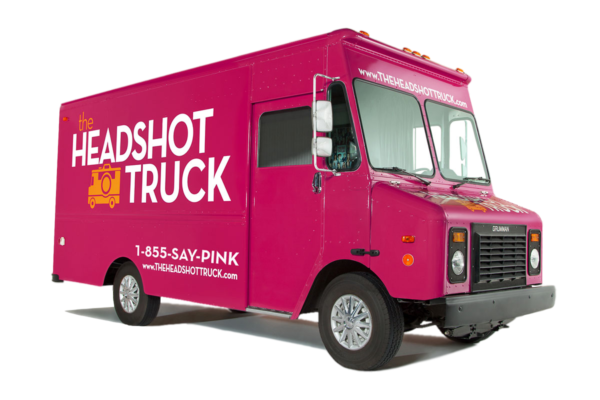From studio portraits to candid captures, tracing the evolution of modeling headshots is a fascinating journey through time. As technology and self-expression have changed, so has the art of capturing a model’s true beauty.
The 1960s saw a shift to more naturalistic headshots that placed an emphasis on showcasing the model’s own unique features. Models were often posed against plain backgrounds with minimal props or accessories, which allowed their individual personalities to shine through in the shots. With the emergence of Super 8 film, models had a greater range to explore different angles and look for their headshots.
In the 1970s, there was an increase in experimentation with color photography as well as candid captures taken outdoors or on location rather than in studios. This led to a much more casual and realistic look for modeling headshots. The fashion industry also started to embrace the idea of accessibility and individuality, which encouraged a trend towards more creative headshots that could capture different moods and styles.
The 1980s saw an emergence of more dynamic poses and use of props, as well as an increased popularity in black-and-white photography for modeling headshots. Models were often seen posing with their favorite items or against various backdrops to better show off their looks or personalities.
Additionally, there was a rise in the number of superstars whose unique beauty was captured on film—such as Cindy Crawford and Madonna—which set a new standard for what it meant to be a successful model.
By the 1990s, digital cameras had become increasingly popular and made it easier than ever before to take detailed and professional-looking modeling headshots. Photographers also began to experiment with more extreme lighting techniques, which gave models an edgier look in their shots. With the advent of Photoshop, professionals were able to manipulate colors and textures for a truly customized finish.
The 2000s has seen the emergence of social media, which has opened up modeling opportunities for all kinds of people from all walks of life. This has led to a much wider variety of headshot styles that range from traditional studio portraits to creative snapshots taken on location or even at home.
The current trend is towards naturalistic photos that capture the unique beauty and personality of each individual model. As technology continues to evolve, so too will the art of modeling headshots.
The 2020s has seen a shift towards the use of technology to optimize headshots and make them more impactful. AI-powered editing tools are now available which allow models to quickly and easily retouch their photos while still maintaining their natural beauty. Additionally, many new digital cameras have been developed that make it easier than ever before to capture sharp, crystal clear images with great accuracy.
Furthermore, 3D scanning technology is becoming increasingly popular for producing life-like models for promotional events or advertisements. As photographers continue to explore new ways of capturing striking images, the future of modeling headshots looks exciting and promising!
Lights, Camera, Pose: A Journey through Iconic Poses in Modeling Headshots
The history of modeling headshots is a long and fascinating one. From the early days of black-and-white film to the modern era of digital photography, models have been experimenting with different poses in order to capture their true beauty. Here is a look at some of the most iconic poses that have graced magazine covers and advertising campaigns throughout the years.
The 1960s were all about classic glamor and traditional posing techniques. Models often posed against minimalist backdrops with minimal props or accessories, allowing their natural features to take center stage. The emphasis was on showcasing the model’s own unique beauty without any distractions.
The 1970s saw an emergence of color photography as well as more candid shots taken outdoors or on location. This allowed for a more natural, relaxed look that captured the everyday life of ordinary people. Models were seen posing in their favorite places or with their favorite items to create a sense of authenticity and personal connection with the viewer.
The 1980s gave rise to more exaggerated poses that often made use of props and dramatic lighting setups. Models were seen sporting wild hairstyles and elaborate costumes while striking a pose against vibrant backgrounds that showed off their individual style and personalities.
The 1990s saw an increase in digital photography, which opened up new possibilities for manipulating photographs to produce stunning results. Photographers began to experiment with special effects, such as airbrushing or retouching, which enhanced models’ features while still remaining true to their natural beauty.
Headshots have come a long way since days of black-and- film and classic posing techniques, but some things never change. From classic glamor to modern digital manipulation, modeling headshots continue to bring out the unique beauty in each individual model. As photography technology continues to evolve, so too does the art of taking iconic headshots!
The Evolution of Retouching: Enhancing Beauty in Modeling Headshots
Retouching has come a long way from its humble beginnings. In the early days of photography, retouching was done by hand and involved manually manipulating photos with ink, pencils, and other tools. This labor-intensive process required a great deal of skill and talent, as well as a mastery of light and shadow.
However, this technique could be used to make subtle changes to the image that enhanced the beauty of a model’s features or fixed minor imperfections without drastically altering the overall look of the photo.
In recent years, digital retouching has become increasingly popular in modeling headshots. Digital retouching allows for much more precise control over how an image looks.
With digital tools like Photoshop, an artist can quickly and easily make adjustments to a photo while maintaining the natural beauty of its subject. This type of retouching is often used to soften features, adjust skin tone, remove blemishes, smooth wrinkles, whiten teeth, and even reshape facial features.
Digital retouching has revolutionized the way headshots are taken and edited. Photographers no longer have to wait hours or days for a film to be developed; instead they can immediately start editing photos on their computers.
The results of digital retouching are so realistic that it’s almost impossible to tell if a photo has been manipulated at all! This allows photographers to create stunning images while still preserving the natural beauty of their models.
Serving With A Lifetime Of Experience
At The Headshot Truck, our goal is to help you create stunning headshots that will make a lasting impression. With years of experience and the latest digital techniques, we are confident in our ability to capture beautiful images that show off your unique features.
Whether you’re looking for classic glamor or modern digital manipulation, we have the skills and expertise to create stunning headshots that will help you stand out from the crowd. Contact us today to get started!


